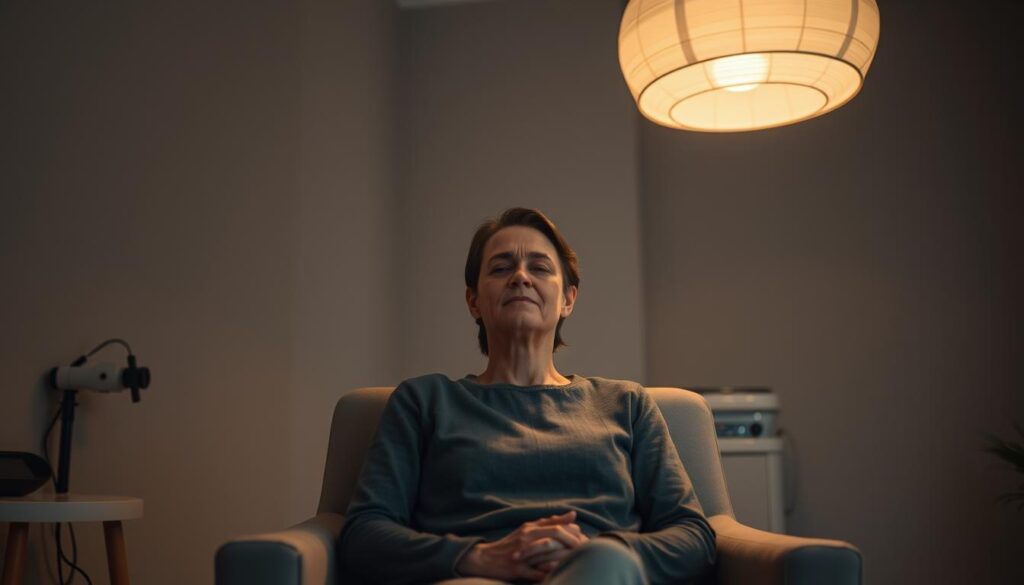Could modern medicine offer lasting solutions for persistent discomfort without invasive procedures? At our practice, we believe personalized strategies hold the key to unlocking mobility and restoring quality of life. Chronic discomfort stems from countless sources—injuries, nerve issues, or age-related wear—and no two cases are identical.
Our team of spine surgeons and specialists collaborates to blend advanced therapies with proven techniques. From tailored medication plans to cutting-edge minimally invasive methods, we focus on whole-body wellness rather than temporary fixes. Physical therapy, nerve blocks, and regenerative treatments form the foundation of our approach.
Why settle for one-size-fits-all care? We prioritize evidence-based combinations that adapt to your unique needs. By merging clinical expertise with compassionate support, we empower patients to reclaim their daily routines. This guide explores how multidisciplinary solutions create sustainable results—because relief shouldn’t mean compromising your lifestyle.
Key Takeaways
- Chronic discomfort often requires blended therapies instead of single treatments.
- Specialists combine medications, physical therapy, and minimally invasive techniques.
- Customized plans address root causes rather than masking symptoms.
- Collaborative care teams ensure holistic, patient-centered strategies.
- Long-term mobility improvements stem from evidence-based methods.
Introduction to Non-Surgical Pain Management
When daily life feels overshadowed by constant discomfort, exploring lasting solutions becomes essential. Chronic discomfort lasts beyond typical healing periods—often months or years—and disrupts work, relationships, and mental well-being. Simple tasks like walking or sitting can feel overwhelming, creating cycles of frustration.

Defining Chronic Pain and Its Impact
Unlike short-term injuries, persistent discomfort rewires how the nervous system responds. It affects sleep patterns, energy levels, and emotional resilience. Many patients report feeling isolated or misunderstood, even by healthcare providers.
The Need for Alternatives to Surgery
Surgical interventions carry risks like infections, lengthy recovery periods, or incomplete relief. For some, operations may not address underlying causes. This is where our team steps in—board-certified specialists design tailored plans using methods like:
| Approach | Recovery Time | Risks |
|---|---|---|
| Surgical Interventions | 6–12 weeks | Higher infection risk |
| Non-Surgical Options | Days to 2 weeks | Minimal side effects |
Physical therapy rebuilds strength safely, while nerve-targeting injections reduce inflammation quickly. Mind-body practices like guided relaxation complement these methods, fostering holistic healing. We prioritize strategies that let patients maintain their routines without major disruptions.
Understanding Chronic Pain Conditions
Living with persistent discomfort often feels like navigating a maze without a map. While injuries or infections may start the journey, long-term struggles frequently stem from deeper sources. Identifying these roots helps craft strategies that restore freedom rather than temporary comfort.
Common Causes and Triggers
Conditions like arthritis, sciatica, or fibromyalgia often develop from injuries, inflammation, or nerve damage. Degenerative changes in joints or discs create ongoing strain, while autoimmune disorders can amplify sensitivity. Even after initial healing, the body sometimes misfires signals, trapping patients in cycles of distress.
Triggers vary widely—stress, poor posture, or weather shifts might intensify symptoms. Repetitive motions at work or sudden movements during exercise can strain weakened areas. Recognizing these patterns allows us to build preventive habits alongside treatment.
How Chronic Pain Affects Daily Life
Simple tasks like cooking or driving become exhausting battles. Many patients reduce social activities to avoid flare-ups, leading to isolation. Work productivity often drops, and sleep disturbances leave energy reserves depleted.
Standard approaches like over-the-counter medications sometimes fail to address complex cases. This gap highlights why understanding individual triggers and biological factors matters. Our team combines diagnostics with lifestyle insights to break cycles of frustration, focusing on sustainable mobility over quick fixes.
Effective Relief Strategies Without Major Operations
Breaking free from persistent discomfort often requires blending modern methods with precision. Our specialists focus on customized combinations that tackle root causes while preserving your daily rhythm. By merging advanced diagnostics with progressive therapies, we create plans designed for lasting results.

Diverse Solutions for Complex Needs
We offer multiple pathways to comfort, including:
- Anti-inflammatory medications to calm irritated tissues
- Precision-guided injections that deliver relief directly to problem areas
- Physical reconditioning programs to restore mobility safely
These approaches work together to reduce swelling, improve movement, and interrupt discomfort cycles. For example, nerve blocks can provide weeks of relief while patients rebuild strength through guided exercises.
Smart Integration of Advanced Methods
Minimally invasive techniques play a key role in modern care plans. Procedures like radiofrequency ablation use targeted heat to quiet overactive nerves—often completed in under an hour. Recovery typically takes days rather than months, letting patients maintain work and family commitments.
By combining these methods with lifestyle adjustments, we help reduce dependence on opioids or major surgeries. One study showed 78% of patients avoided operations after six months of integrated care. This layered strategy addresses both physical symptoms and overall well-being, fostering resilience against future flare-ups.
Overview of Injection and Minimally Invasive Procedures
Modern relief strategies often begin with pinpoint accuracy. Targeted approaches allow us to address discomfort at its source while preserving healthy tissue. These methods bridge the gap between oral medications and major operations, offering precise solutions for stubborn symptoms.
Epidural Steroid, Facet Joint, and Trigger Point Injections
Epidural steroid injections calm inflamed nerves near the spinal cord. A corticosteroid-medication blend reduces swelling in compressed areas, often easing leg or neck pain for months. Most patients resume light activities within 48 hours.
Facet joint injections target arthritis-related spinal discomfort. Guided by imaging technology, we deliver anti-inflammatory medication directly into affected joints. This approach helps diagnose pain sources while providing therapeutic benefits.
For muscle knots causing headaches or back strain, trigger point injections offer rapid release. A numbing agent relaxes tense fibers, restoring natural movement patterns. Relief frequently begins within minutes.
Advanced Procedures and Radiofrequency Ablation
When repeated injections provide temporary results, radiofrequency ablation extends relief. Heat waves gently disrupt nerve signals responsible for chronic discomfort. The procedure takes 30-90 minutes, with effects lasting 6-12 months.
These methods minimize reliance on systemic medications. Over 60% of patients in clinical trials reduced opioid use after starting ablation therapy. We combine these techniques with personalized rehab plans to strengthen vulnerable areas.
Alternative and Complementary Therapies for Pain Relief
Expanding your toolkit for comfort can include time-tested methods that harmonize with modern care. These approaches often enhance conventional treatments by addressing stress, muscle tension, and nervous system imbalances. Many find they regain control through methods that nurture both body and mind.
Holistic Methods for Whole-Person Care
Acupuncture uses ultra-fine needles to stimulate energy flow and reduce tension. Studies show it helps calm overactive nerves, easing discomfort linked to conditions like arthritis or migraines. Sessions typically last 20–40 minutes, with effects building over multiple visits.
Therapeutic massage releases tight muscles that contribute to strain. Techniques like deep tissue work improve circulation, while gentle strokes promote relaxation. This hands-on therapy complements spinal treatments by reducing pressure on sensitive areas.
Mind-body practices also play a vital role:
| Approach | Benefits | Session Duration |
|---|---|---|
| Guided Yoga | Improves flexibility, reduces stress hormones | 30–60 mins |
| Breathing Exercises | Lowers heart rate, interrupts pain signals | 10–15 mins |
| Meditation | Enhances emotional resilience | 5–20 mins |
These strategies work best when tailored to individual needs. We blend them with other therapies to create layered plans. For example, pairing acupuncture with gentle stretching often yields faster improvements than either method alone.
Patients report better sleep and renewed energy when combining these approaches. By focusing on sustainable habits, we help build lasting resilience against flare-ups.
The Role of Physical Therapy in Chronic Pain Relief
Movement unlocks the body’s natural healing potential. For those struggling with persistent discomfort, guided physical activity rebuilds strength while addressing root causes. Our team crafts programs that adapt to individual needs, ensuring progress without strain.
Customized Exercise and Rehabilitation Plans
Physical therapy focuses on restoring function through targeted movements. We design routines to strengthen weak muscles, improve joint flexibility, and stabilize vulnerable areas like the spinal cord or lower back. Each plan evolves as patients regain confidence in their bodies.
Manual techniques complement exercise regimens. Therapists use hands-on adjustments to relieve pressure on nerve pathways and improve alignment. Modalities like heat packs or ultrasound therapy enhance blood flow to stiff tissues, accelerating recovery.
| Modality | Benefits | Common Use Cases |
|---|---|---|
| Heat Therapy | Relaxes muscles, increases circulation | Chronic stiffness, arthritis |
| Cold Therapy | Reduces swelling, numbs acute pain | Post-injury flare-ups |
| Ultrasound | Promotes tissue healing | Soft tissue injuries |
| Manual Therapy | Improves joint mobility | Spinal misalignment |
For back pain sufferers, core-strengthening exercises reduce strain on the spine. Patients with sciatica benefit from stretches that decompress irritated nerves. We prioritize education, teaching posture correction and injury prevention strategies to maintain long-term mobility.
Consistency transforms progress into lasting results. Over 80% of our patients report improved daily function within 8 weeks of starting therapy. By blending movement with mindful recovery, we help reclaim lives from chronic discomfort.
Multidisciplinary Approaches in Pain Management
Collaboration drives breakthroughs in complex care. When multiple experts unite, they uncover solutions that single-discipline teams might miss. Our network of neurologists, physiatrists, and rehabilitation specialists works seamlessly to map out each patient’s path to recovery.
Coordinated Care Among Specialists
Weekly case reviews ensure every angle gets attention. For example, a patient with chronic knee osteoarthritis might receive input from three professionals:
- A physiatrist prescribes targeted exercises
- A neurologist evaluates nerve signaling patterns
- A nutritionist recommends anti-inflammatory foods
This synergy allows us to address overlapping conditions simultaneously. Treatment plans evolve as new insights emerge, ensuring no stone goes unturned.
Using Diagnostics to Tailor Treatments
Advanced imaging and diagnostic blocks act as our roadmap. By temporarily numbing specific nerves, we confirm which pathways drive discomfort. This precision guides decisions about which procedures—like radiofrequency ablation or joint injections—will deliver optimal results.
We also leverage:
- Dynamic motion analysis to spot movement imbalances
- Genetic testing for medication compatibility
- 3D posture scans to identify hidden stressors
With six locations across the region, we make this comprehensive approach accessible. Patients gain a wide range of options tailored to their biology and lifestyle—proving personalized care isn’t just possible, but essential.
Empowering Patients Through Personalized Care and Education
True healing begins when patients feel heard and equipped with knowledge. We craft care plans that evolve alongside your progress, blending clinical expertise with transparent communication. This partnership builds trust while fostering active participation in recovery.
Patient-Centered Treatment Strategies
Every journey starts with understanding your unique story. During initial consultations, we map out:
- Daily challenges affecting mobility
- Previous treatments that fell short
- Personal goals for pain relief
This foundation lets us combine therapies like physical therapy with stress-reduction techniques. One patient regained gardening abilities through aquatic exercises and nerve glides—avoiding surgery entirely.
| Approach | Timeline | Key Benefit |
|---|---|---|
| Custom Exercise Plans | 4–8 weeks | Builds lasting strength |
| Education Workshops | Ongoing | Reduces flare-up triggers |
| Follow-Up Assessments | Monthly | Tracks progress |
Guidance for Long-Term Pain Relief and Mobility
Knowledge transforms patients into informed advocates. We explain how nerve pathways influence discomfort and demonstrate posture adjustments during routine tasks. Regular check-ins allow us to refine strategies as needs change.
Success isn’t about complete elimination—it’s restoring control. A recent study showed 83% of participants maintained improvements six months after completing our program. By focusing on sustainable habits over quick fixes, we help rewrite the story of chronic discomfort.
Conclusion
Finding lasting solutions for chronic discomfort requires informed choices. Our practice focuses on evidence-based methods like spinal cord stimulation, nerve blocks, and tailored strategies that address root causes. These approaches minimize recovery time while maximizing mobility.
Coordinated care teams blend therapies such as guided injections for neck strain or celiac plexus treatments for abdominal discomfort. Patients benefit from reduced reliance on systemic medications and quicker returns to daily routines. Education empowers individuals to sustain progress through posture adjustments and stress management.
Whether managing neck stiffness or complex celiac plexus issues, personalized plans adapt as needs evolve. We invite you to explore our full range of modern solutions designed for long-term wellness. Together, we can build a path toward freedom from persistent discomfort.

Leave a Reply